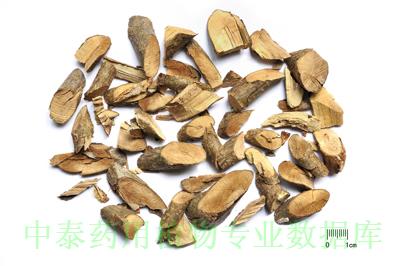| [English Name] | Serissa Herb | |
| [Chinese Name] | 白马骨 | |
| [Pinying Name] | Baimagu | |
| [Latin Name] | Serissae Serissoidis Herba | |
| [Genera] | Rubiaceae | |
| [Efficacy] | Antipyretic drug | |
| [Pictures] | Plant picture | Drug picture |

|
||
| [Alias] | ||
| [Source] | ||
| [Plant morphology] | ||
| [Distribution] | ||
| [Gathering and processing] | ||
| [Characteristics] | ||
| [Ecology] | It grows in hillside、road side、stream side and bushes.It prefers warm and moist climate,but resistants to drought.It is cultivated better in hills and well-drained sand-layered soil in plat bam. | |
| [Chemical composition] | This plant contains ursolic acid, (-)-syringaresinol, (+)-medioresinol, (-)-syringaresinol-4-O-β-D-glucopyranoside, 10-deacetylasperulosidic acid, paederosidic acid, vitexin, daucosterol, D-mannitol, β-sitosterol[1], palmitic acid, corosolic acid, urs-12-en-28-ol, oleanolic acid, 4-hydroxy-3-methoxy benzoic acid, 2,6-dimethoxy-p-benzoquinone[2]. The roots contains (+)-pinoresinol, (-)syringaresinol, (+)-meduiresinol, (-)-olivil, β-sitosterol, oleanolic acid, daucosterol[3]. |
|
| [Pharmacological activities] | ||
| [Clinical trial] | ||
| [Properties] | Taste: tastless, bitter, slightly pungent; property: cool. |
|
| [Medical and other Uses] | Function: expelling wind and dampness, clearing away heat and toxic material. Syndromes to be treated: cold, jaundice, hepatitis, nephritis, edema, sore throat, diarrhea, ulcer, inflammatory swelling.
|
|
| [Dosage] | Oral administration: decoction, dry 10~ Topical application: in right amount, or wash with the decoction, or smashed and smear on the skin. |
|
| [Cautions] | Forbid to be used in the patients of carbuncles of yin nature. |
|
| [Traditional usage] | ||
| [Toxicological studies] | ||
| [Pharmaceutical preparations] | ||
| [References] | ||